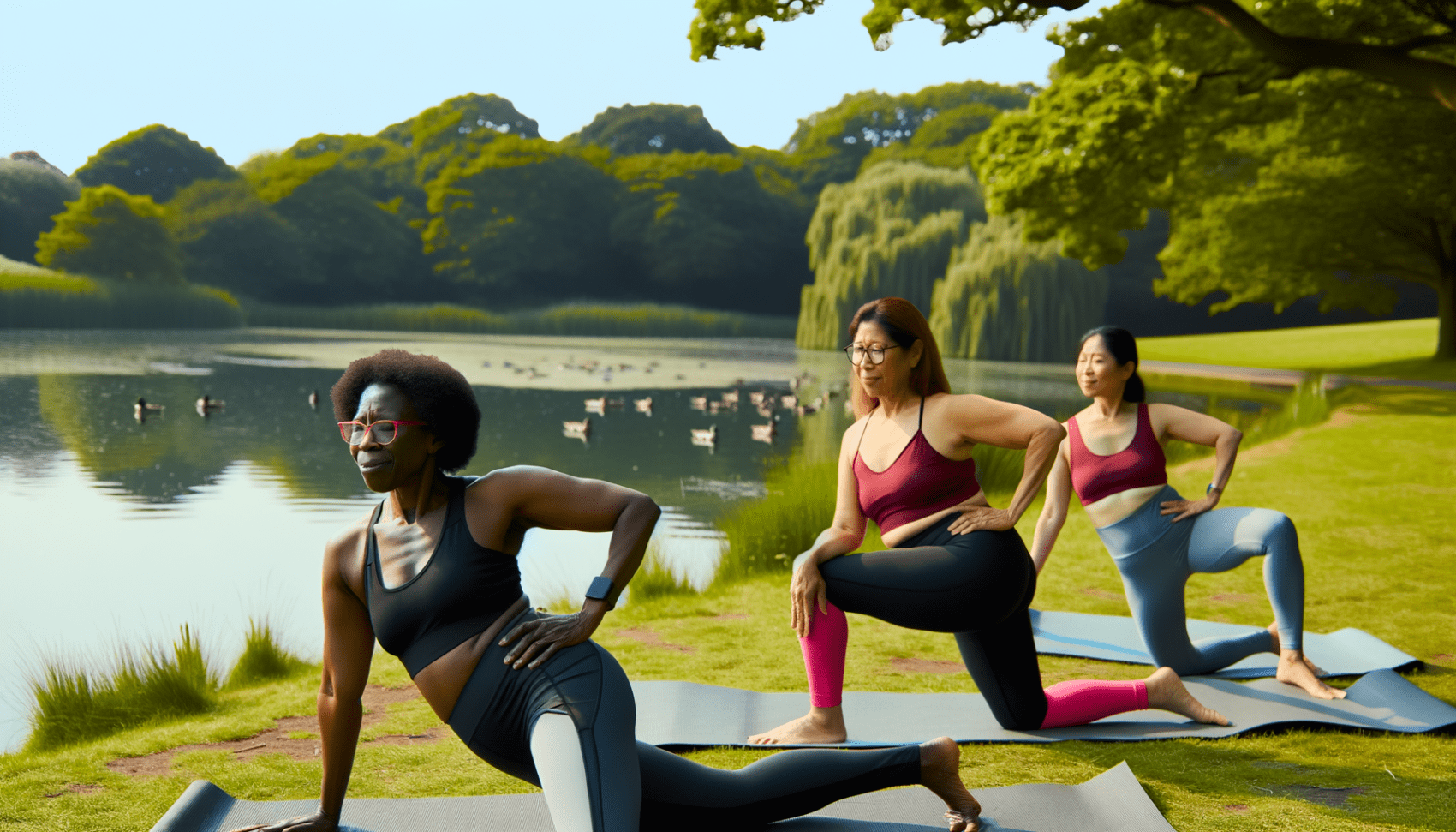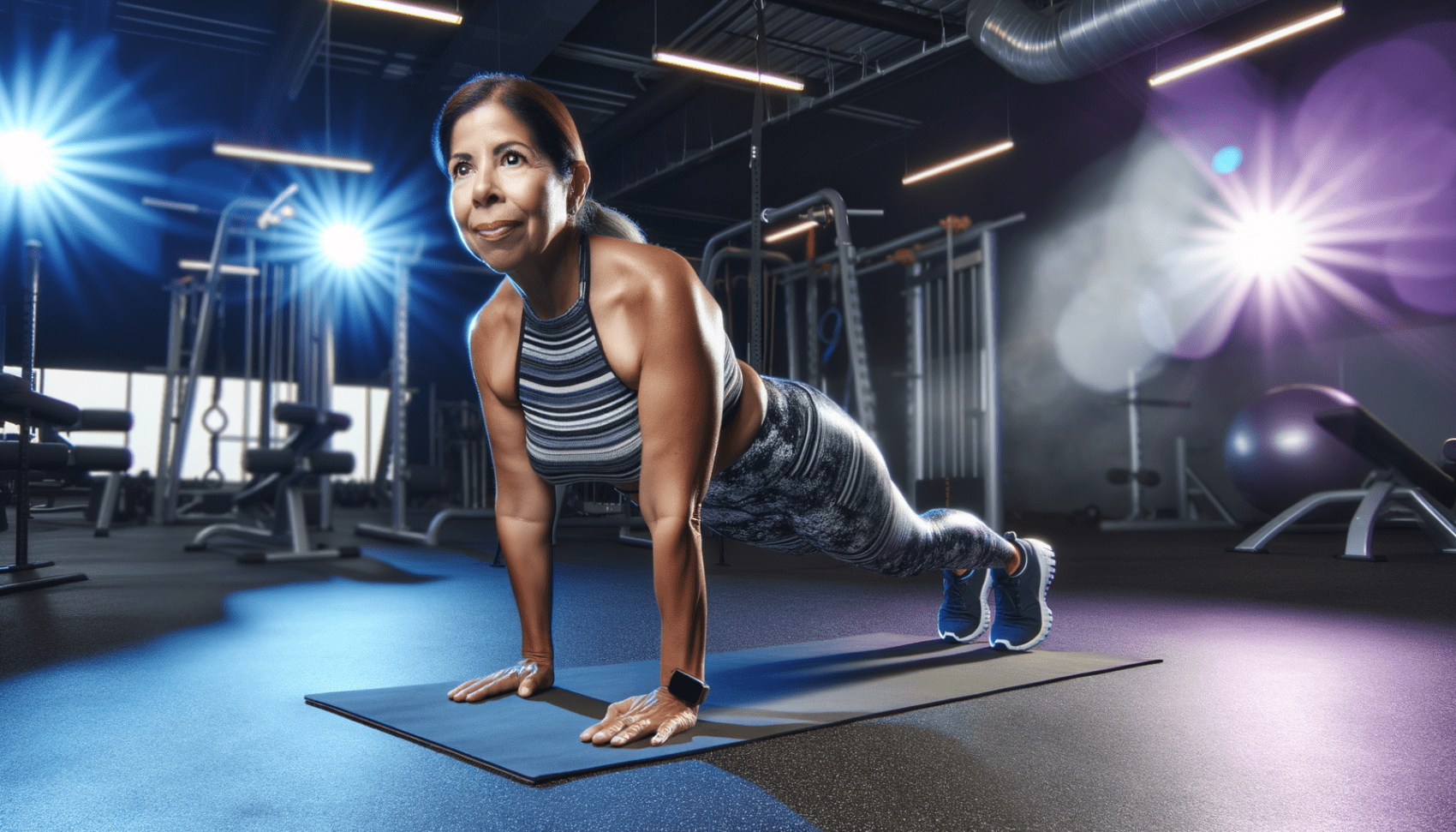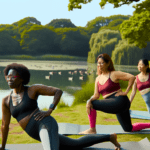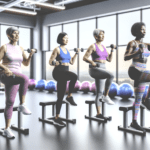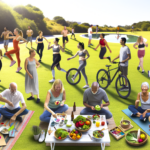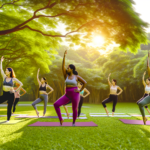Introduction to Fitness After 50
The Importance of Staying Active as You Age
As we cross the threshold of 50, staying active becomes more crucial than ever. Engaging in regular physical activity is not just about managing weight; it’s about preserving muscle mass, maintaining bone density, and ensuring the continued functionality of our joints. Exercise is also a key player in combating chronic diseases, enhancing mental health, and improving cognitive function. Most importantly, it helps maintain independence and elevates the quality of life. The journey to fitness after 50 can begin with simple steps, such as incorporating basic exercises into your daily routine, and can lead to significant health transformations.
Common Misconceptions About Exercise and Aging
Many people believe that reaching a certain age means it’s too late to start exercising or that they’re limited to certain types of “age-appropriate” activities. However, these misconceptions couldn’t be further from the truth. Fitness experts assert that it’s possible to get into the best shape of your life after 50, even if you’ve been inactive previously. The key is to find activities you enjoy and to start at a pace that’s comfortable for you. Whether it’s walking, swimming, or strength training, the right exercise is the one that you will consistently perform and enjoy.
Setting Realistic Fitness Goals for the 50-Plus Demographic
Setting realistic fitness goals is essential for the 50-plus demographic. It’s important to recognize that everyone’s body is unique, and what works for one person may not work for another. Goals should be tailored to individual capabilities, health conditions, and personal interests. Starting with small, achievable objectives, such as walking for 20-30 minutes most days, can lead to more significant health benefits over time. As fitness levels improve, goals can be adjusted to include a variety of exercises that promote strength, flexibility, and balance. Consulting with healthcare providers and fitness professionals can help create a plan that is both safe and effective, ensuring a sustainable path to health and wellness after 50.
Understanding the Challenges and Benefits
Physical Challenges in the 50-Plus Age Group
As we age, our bodies naturally undergo changes that can pose challenges to staying active. For individuals over 50, these changes often include a decrease in muscle mass and bone density, reduced joint flexibility, and a slower metabolism. These factors can lead to a higher risk of injuries, chronic pain, and conditions such as osteoporosis and arthritis. It’s crucial to recognize these physical limitations and adjust exercise routines accordingly. Low-impact activities like swimming, cycling, and walking can be beneficial, as well as incorporating weight training to help build bone mass and slow degeneration.
Mental and Emotional Benefits of Regular Exercise
Engaging in regular physical activity is not only beneficial for the body but also for the mind. Exercise has been shown to improve mental health by reducing symptoms of depression and anxiety. It can also enhance cognitive function, boost self-esteem, and increase overall life satisfaction. The release of endorphins during exercise provides a natural mood lift, often referred to as the “runner’s high.” Additionally, the sense of achievement and progress that comes with sticking to a fitness routine can be incredibly empowering for the 50-plus demographic.
How Exercise Affects Aging and Longevity
Regular exercise has a profound impact on the aging process and can significantly contribute to increased longevity. Studies have demonstrated that physical activity can help combat age-related muscle loss, improve cardiometabolic health, and lower the risk of chronic diseases. Moreover, maintaining an active lifestyle can lead to better functional independence, allowing older adults to enjoy a higher quality of life. Exercise is not just about adding years to life, but also life to years, ensuring that those extra years are lived with vitality and independence.
It’s important to note that starting an exercise routine at any age can bring about benefits. Whether you’re 50 or 80, it’s never too late to reap the rewards of becoming more active. With the right approach, including a mix of aerobic, strength, balance, and flexibility exercises, older adults can safely enjoy the multitude of benefits that regular physical activity offers.
Developing a Sustainable Exercise Routine
Starting with Low-Impact Exercises
Embarking on a fitness journey after 50 should begin with low-impact exercises that minimize stress on the joints while still providing cardiovascular and muscular benefits. Activities such as walking, swimming, cycling, and yoga are excellent starting points. These forms of exercise can help build endurance and strength without overburdening the body. Low-impact exercises are particularly beneficial for those who may be managing joint pain or are new to regular physical activity.
Incorporating Strength Training and Flexibility
Strength training is crucial for maintaining muscle mass, which naturally diminishes with age. Incorporating light weights or resistance bands can improve muscle strength, bone density, and metabolic rate. It’s recommended to start with weights that allow for 10-12 repetitions comfortably, gradually increasing the weight as strength improves. Additionally, flexibility exercises such as stretching or practicing yoga can enhance joint range of motion and reduce the risk of injury. Flexibility and strength training should be integral parts of your exercise routine, aiming for at least two sessions per week.
Creating a Balanced and Varied Exercise Plan
A balanced exercise plan includes a mix of cardiovascular, strength, balance, and flexibility workouts. Variety not only keeps the routine interesting but also challenges different muscle groups and prevents overuse injuries. For instance, you might alternate between swimming, cycling, and walking for your cardio workouts, while incorporating Pilates or yoga for balance and flexibility. Creating a varied plan can help you stay engaged and look forward to your workouts.
Setting Incremental and Achievable Milestones
Setting realistic and incremental goals is key to maintaining motivation and measuring progress. Begin with small, achievable milestones, such as a daily 15-minute walk or completing a full yoga class. As you reach these goals, gradually increase the duration and intensity of your workouts. Celebrate each achievement, no matter how small, to build confidence and encourage long-term commitment to your fitness journey. Remember, consistency is more important than intensity when starting out.
By following these guidelines, you can develop a sustainable exercise routine that will enhance your physical health and overall well-being well into your 50s and beyond. Always consult with a healthcare provider before starting any new exercise program, especially if you have pre-existing health conditions.
Overcoming Sedentary Habits
The Risks of a Sedentary Lifestyle
As we age, the temptation to lead a sedentary lifestyle can increase, but so do the risks associated with it. A lack of physical activity is linked to numerous health issues, including obesity, heart disease, diabetes, and certain cancers. For those over 50, the dangers are even more pronounced, with increased chances of developing chronic conditions and experiencing a decline in muscle mass, bone density, and metabolism. Moreover, a sedentary lifestyle can exacerbate the symptoms of arthritis and contribute to a higher risk of falls due to weakened muscles and balance.
Simple Strategies to Reduce Sedentary Time
Combatting inactivity doesn’t require drastic changes; small, consistent efforts can make a significant difference. Here are some simple strategies:
- Stand Up: Make it a habit to stand up every hour. Use a timer if necessary.
- Take Short Walks: Short, frequent walks throughout the day can add up to substantial health benefits.
- Choose Active Leisure: Opt for hobbies that require movement, such as gardening or dancing.
- Modify Your Environment: Keep exercise equipment like resistance bands or light weights within easy reach to encourage spontaneous physical activity.
Incorporating Movement into Daily Life
Integrating movement into your daily routine is an effective way to reduce sedentary habits without feeling overwhelmed. Consider these ideas:
- Active Transportation: Walk or cycle for short errands instead of driving.
- TV Time: Stand or exercise during commercials or between episodes if you’re watching a series.
- Workplace Activity: If you’re still working, use a standing desk or take walking meetings.
- Household Chores: Turn cleaning and cooking into opportunities for stretching and strengthening.
- Family Engagement: Involve family members in active games or walks, which can also enhance social connections.
Remember, the goal is to make movement a natural and enjoyable part of your life. By doing so, you’ll not only improve your physical health but also boost your mood and cognitive function, contributing to a more vibrant and fulfilling lifestyle after 50.
Nutrition and Hydration for Active Seniors
Essential Nutrients for Muscle Recovery and Energy
As we age, our bodies require different nutritional needs to support muscle recovery and maintain energy levels. For active seniors, it’s crucial to focus on a diet rich in high-quality proteins, which are vital for muscle repair and growth. Aim for approximately 0.5 grams of protein per pound of body weight, and include a variety of sources such as lean meats, fish, dairy, beans, and legumes in your meals.
Additionally, complex carbohydrates are essential for sustained energy. Whole grains, vegetables, and fruits provide the necessary fuel for your workouts and daily activities. Don’t forget about healthy fats, which are necessary for hormone production and nutrient absorption. Avocados, nuts, seeds, and olive oil are excellent choices.
Seniors should also pay attention to micronutrients like calcium and vitamin D for bone health, B vitamins for energy metabolism, and antioxidants to combat oxidative stress from exercise. Incorporating a colorful array of fruits and vegetables can help ensure you’re getting a broad spectrum of these vital nutrients.
Hydration: How Much Water Do You Need?
Hydration is a key component of any fitness regimen, especially for seniors. Water aids in digestion, nutrient absorption, and joint lubrication. While individual needs may vary, a general guideline is to aim for at least 8 glasses (64 ounces) of water per day. However, if you’re active, you may need more to compensate for fluid loss through sweat. Listen to your body’s signals, such as thirst and the color of your urine, which should be light yellow.
It’s important to drink water throughout the day, not just during exercise. Carrying a water bottle can serve as a constant reminder to stay hydrated. Be mindful of beverages that can contribute to dehydration, such as those with high sugar content or caffeine, and opt for water or hydrating electrolyte solutions instead.
Dietary Adjustments to Support an Active Lifestyle
Making dietary adjustments is essential for supporting an active lifestyle in your 50s and beyond. Start by reducing processed foods and those high in added sugars, saturated fats, and sodium. Instead, focus on whole, nutrient-dense foods that provide the energy and nutrients your body needs to perform and recover.
Consider the timing of your meals as well. Eating a balanced meal or snack that includes protein and carbohydrates before and after your workouts can help fuel your exercise and aid in recovery. For example, a banana with a spoonful of almond butter before your workout can provide quick energy, while a post-workout smoothie with protein powder, spinach, and berries can help with muscle recovery.
Lastly, be open to adjusting your portion sizes based on your activity level. As metabolism can slow down with age, you may not need as many calories as you did in your younger years. However, if you’re very active, your body will need more fuel. It’s a delicate balance, so consider consulting with a nutritionist who can help tailor your diet to your specific fitness goals and needs.
Staying Motivated and Overcoming Setbacks
Finding Your ‘Why’: The Key to Long-Term Motivation
Discovering your personal ‘why’ is the cornerstone of maintaining motivation for fitness after 50. This intrinsic motivator is your unique reason for staying active, whether it’s to enjoy playing with grandchildren, managing a health condition, or simply feeling more energetic and alive. To find your ‘why’, reflect on what truly matters to you and how fitness can help you achieve it. Write it down, keep it visible, and remind yourself of it regularly, especially on days when your motivation wanes.
Dealing with Plateaus and Maintaining Progress
It’s natural to hit a plateau in your fitness journey, but it’s how you respond that counts. First, recognize that plateaus are a sign of progress; your body has adapted to your current routine. To move past them:
- Switch up your routine: Introduce new exercises or change the intensity to challenge your body in different ways.
- Set new goals: Aim for performance-based goals, like increasing walking distance or improving flexibility, rather than just weight loss.
- Track your progress: Use a journal or app to monitor your workouts and celebrate small victories to stay motivated.
The Role of Community and Social Support in Fitness
Building a support network can significantly enhance your motivation. Engaging with a community provides accountability, encouragement, and a sense of belonging. Here’s how to cultivate social support:
- Join a group: Participate in fitness classes at your local gym or community center where you can meet peers with similar goals.
- Find a workout buddy: Pair up with a friend who has similar fitness aspirations to keep each other motivated.
- Use technology: Online forums and social media groups offer a platform to share experiences, tips, and encouragement.
Remember, setbacks are a normal part of any fitness journey, especially as you age. By finding your ‘why’, pushing through plateaus, and leaning on your community, you can maintain motivation and continue to reap the benefits of an active lifestyle well into your 50s and beyond.
Safety, Health Checks, and Knowing Your Limits
Pre-Exercise Health Screening and Consultations
Before embarking on a new fitness regimen, it’s crucial for individuals over 50 to undergo a pre-exercise health screening. This assessment, ideally conducted by a healthcare professional or an accredited exercise physiologist, evaluates your medical history, current health status, and any risk factors that may impact your ability to exercise safely. Consultations can also provide personalized advice on the types and intensity of activities suitable for your condition, ensuring a safe and effective workout plan.
Understanding and Listening to Your Body
As we age, our bodies may not recover as quickly as they once did, making it essential to tune in to what our bodies are telling us. Understanding and listening to your body means recognizing the difference between normal exercise discomfort and pain that signals something more serious. Pay attention to any unusual or persistent symptoms and be willing to modify your activities accordingly. Rest days are just as important as workout days, allowing your body to recover and prevent overuse injuries.
Safety Tips to Prevent Injuries
- Warm-Up and Cool-Down: Begin each exercise session with a warm-up to prepare your muscles and end with a cool-down to reduce heart rate gradually.
- Proper Equipment: Use appropriate footwear and gear to support your body and enhance safety during workouts.
- Technique: Focus on form and technique rather than speed or weight to reduce the risk of injury.
- Environment: Ensure the exercise environment is safe, well-lit, and free of hazards that could cause falls or injuries.
When to Adjust Your Fitness Plan
It’s important to recognize when to adjust your fitness plan. If you experience pain, fatigue, or any new health issues, it may be time to reassess your routine with the help of a professional. Additionally, as you progress and your fitness improves, you’ll need to update your plan to continue challenging your body and achieving your goals. Regularly consult with fitness or health professionals to ensure your plan remains aligned with your abilities and health status.
Remember, the goal is to maintain a healthy, active lifestyle, not to push your limits to the point of harm. By taking the right precautions and listening to your body, you can enjoy the numerous benefits of exercise well into your 50s and beyond.

